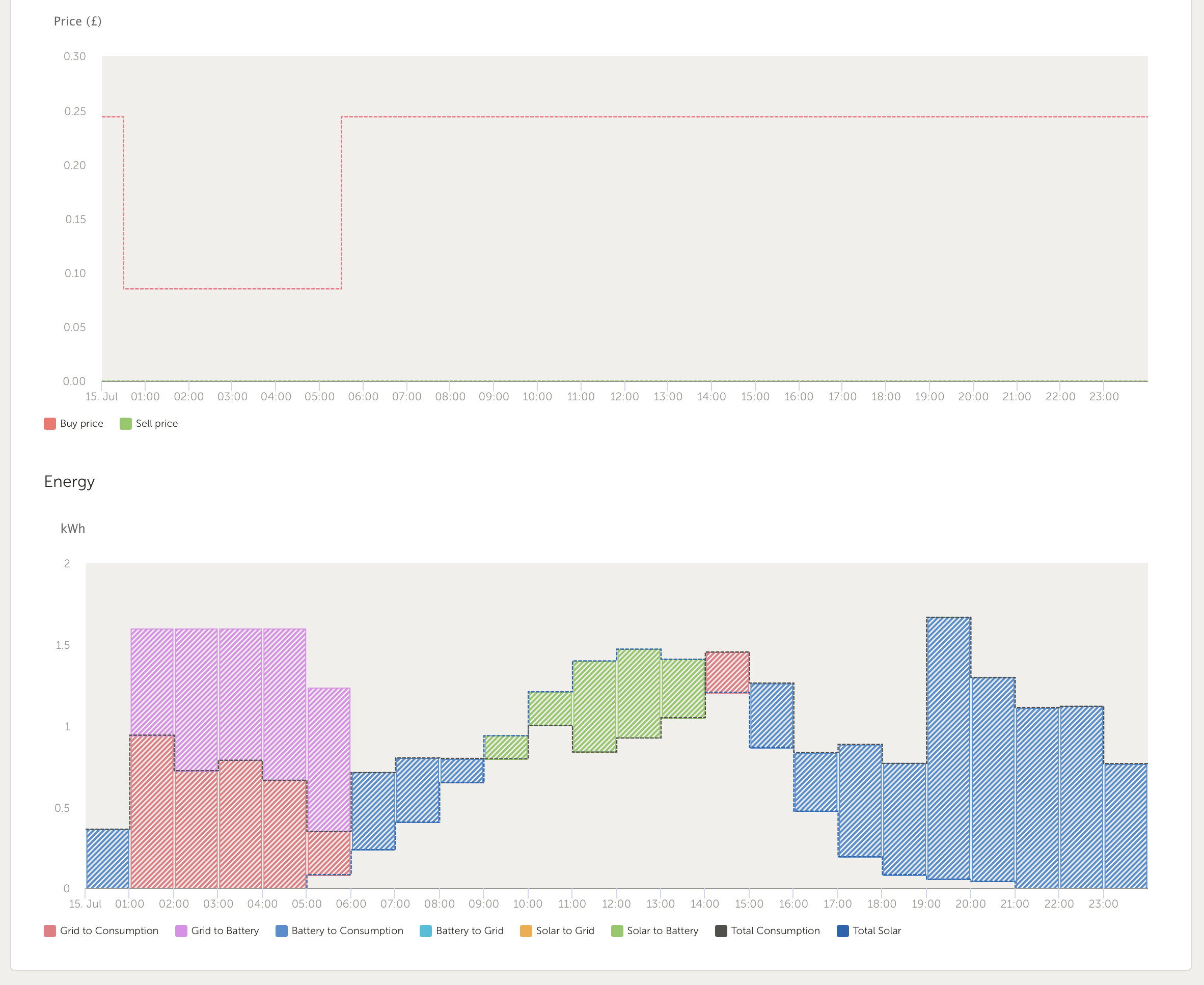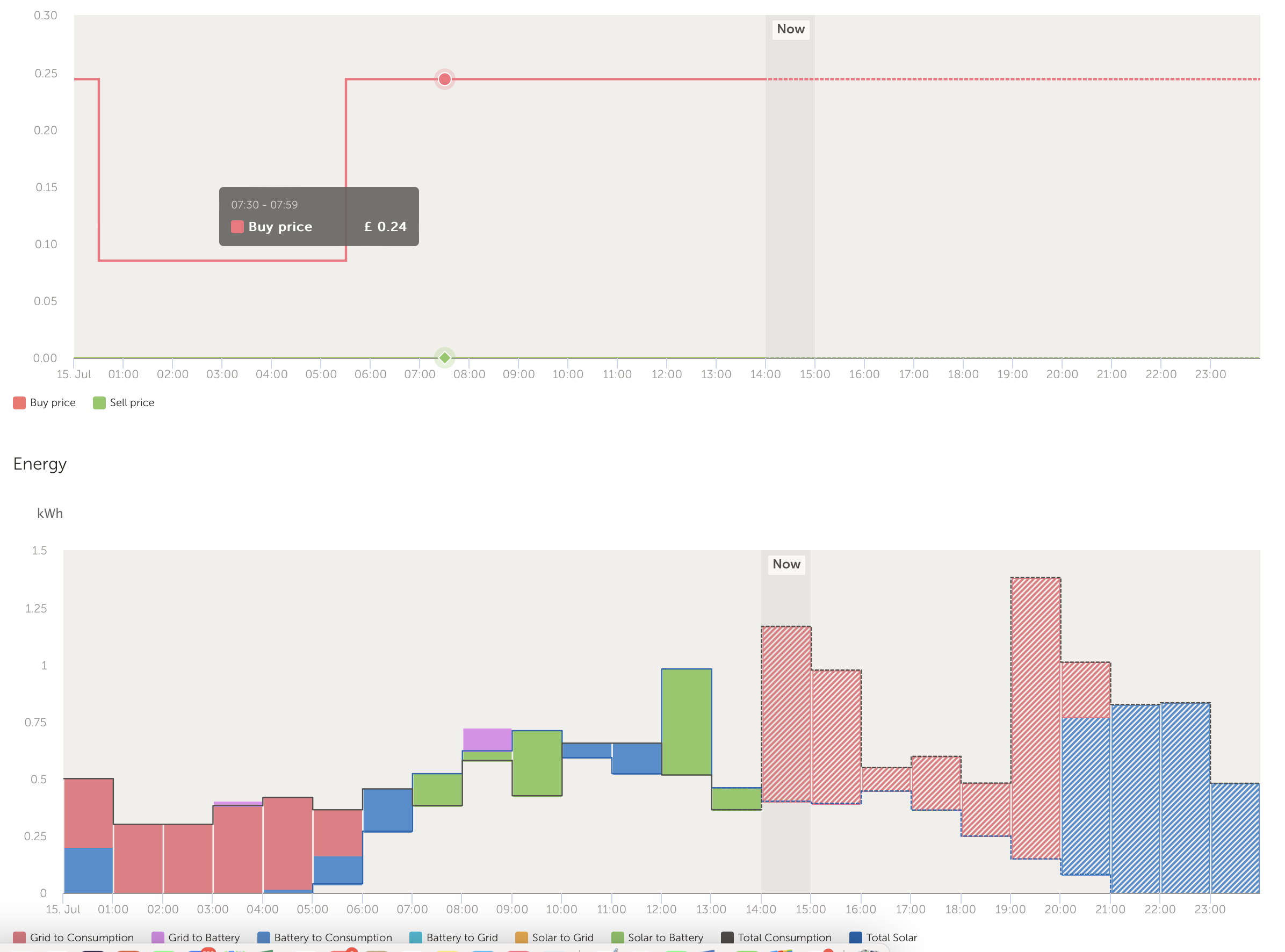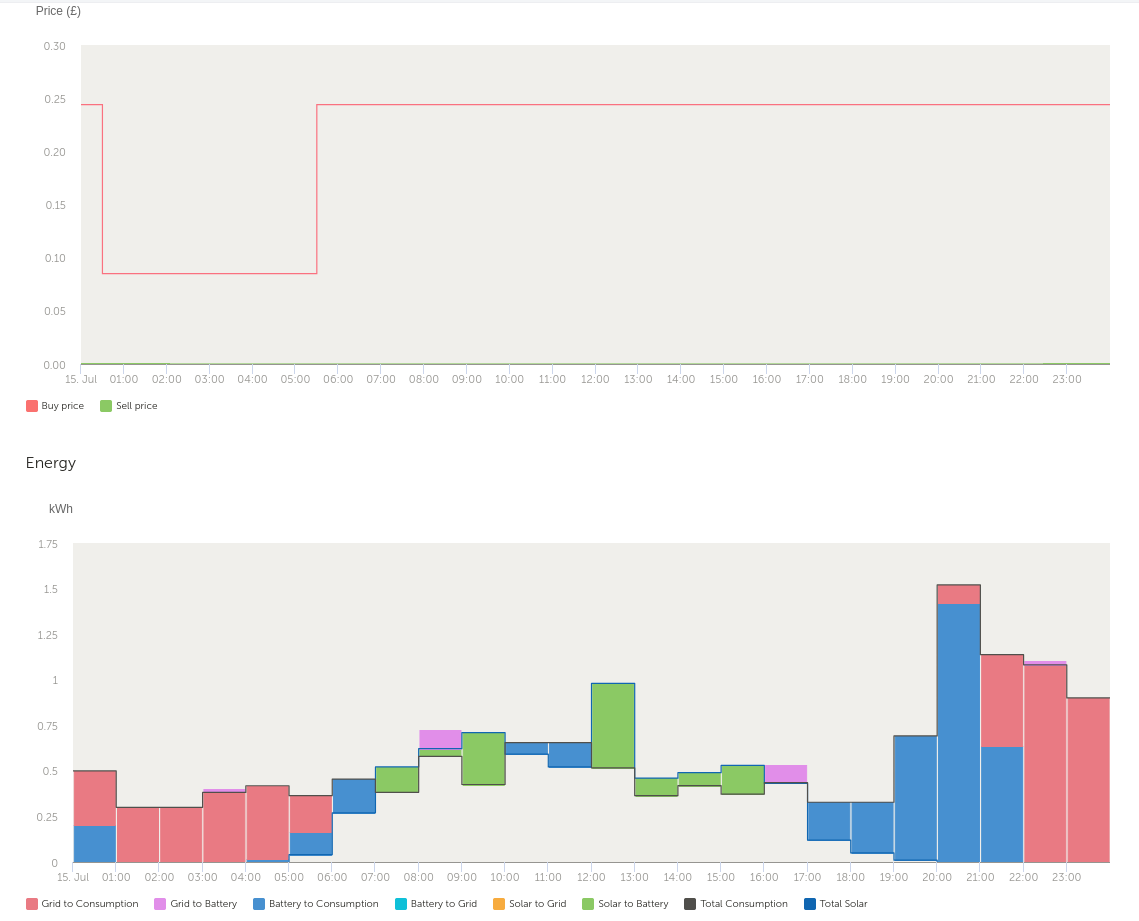I have a very simple Dynamic ESS setup. No feed-in, Octopus Go price tariff - 5 hours overnight cheap rate. So in essence Dynamic ESS has just got to keep the batteries adequately charged to cover the next days predicted consumption and forecasted solar.
But I have found over the past couple of weeks that frequently the forecasted battery SOC will be down to minimum and from time to time even predict grid consumption during the day when there was overnight opportunity to charge the batteries. Here's the graph right now showing tomorrow's forecast. Batteries being charged, but no where close to available capacity, and during the day consumption from grid. And the predicted SOC is down to minimum by end of the day, so not permitting any headroom should the forecast be out.

I have an MPII 3000 and Pylontech bank (4 x US3000, 1 x US5000). Am I missing something in the config (there aren't many variables in my setup!), or is this a feature of the algorithm?


 If you compare your first image to the actual one, you see that the solar yield was a lot less than anticipated.
If you compare your first image to the actual one, you see that the solar yield was a lot less than anticipated.